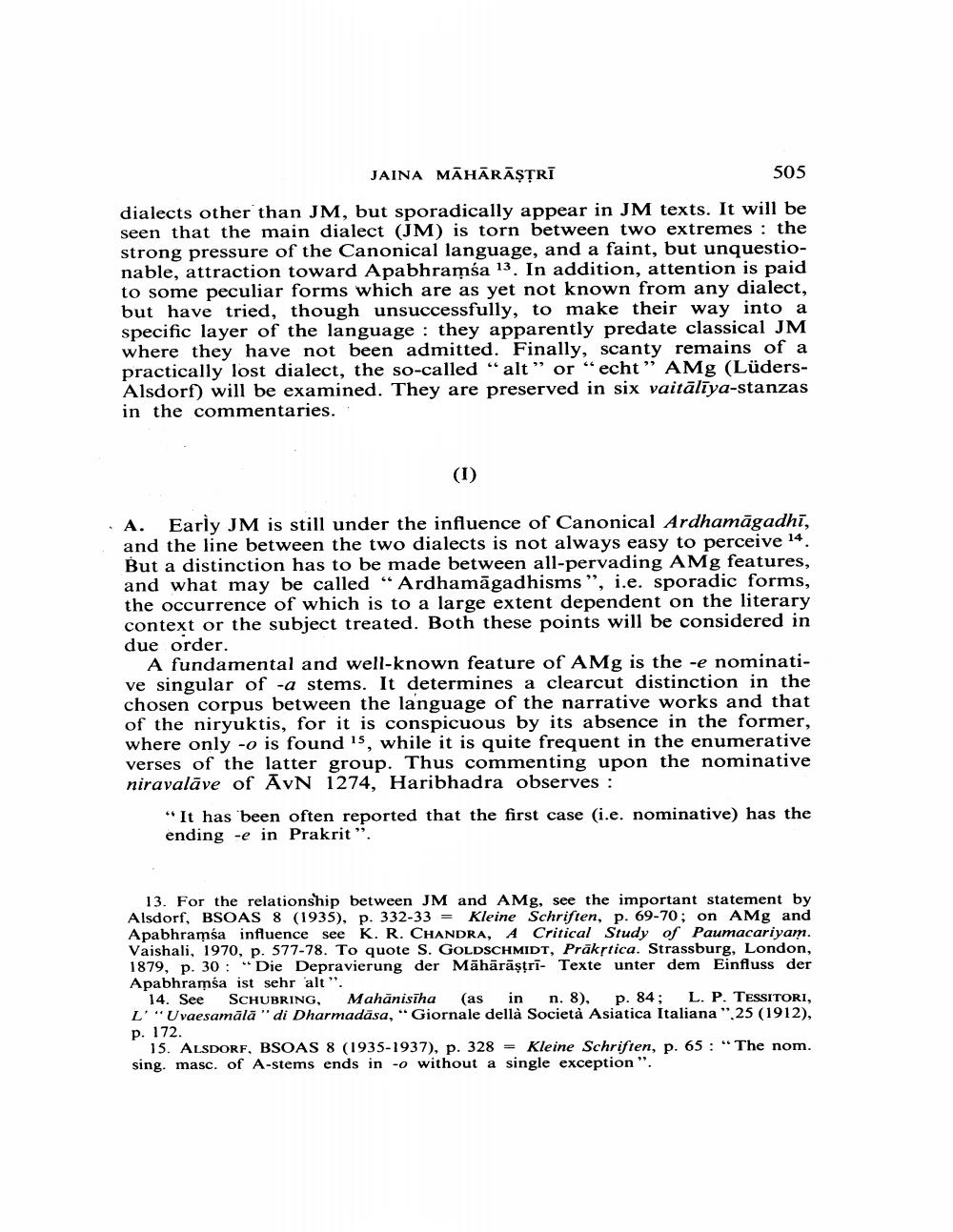Book Title: Morphological Evidence For Dialectal Variety In Jaina Maharastri Author(s): Nalini Balbir Publisher: Nalini Balbir View full book textPage 3
________________ JAINA MĀHĀRĀȘTRĪ 505 dialects other than JM, but sporadically appear in JM texts. It will be seen that the main dialect (JM) is torn between two extremes: the strong pressure of the Canonical language, and a faint, but unquestionable, attraction toward Apabhramśa 13. In addition, attention is paid to some peculiar forms which are as yet not known from any dialect, but have tried, though unsuccessfully, to make their way into a specific layer of the language : they apparently predate classical JM where they have not been admitted. Finally, scanty remains of a practically lost dialect, the so-called "alt" or "echt" AMG (LüdersAlsdorf) will be examined. They are preserved in six vaitālīya-stanzas in the commentaries. (1) • A. Early JM is still under the influence of Canonical Ardhamāgadhi, and the line between the two dialects is not always easy to perceive 14. But a distinction has to be made between all-pervading AMg features, and what may be called “Ardhamāgadhisms", i.e. sporadic forms, the occurrence of which is to a large extent dependent on the literary context or the subject treated. Both these points will be considered in due order. A fundamental and well-known feature of AMg is the -e nominative singular of -a stems. It determines a clearcut distinction in the chosen corpus between the language of the narrative works and that of the niryuktis, for it is conspicuous by its absence in the former, where only -o is found 15, while it is quite frequent in the enumerative verses of the latter group. Thus commenting upon the nominative niravalāve of ĀvN 1274, Haribhadra observes : "It has been often reported that the first case (i.e. nominative) has the ending -e in Prakrit". 13. For the relationship between JM and AMg, see the important statement by Alsdorf, BSOAS 8 (1935), p. 332-33 = Kleine Schriften, p. 69-70; on AMg and Apabhramśa influence see K. R. CHANDRA, A Critical Study of Paumacariyam. Vaishali, 1970, p. 577-78. To quote S. GOLDSCHMIDT, Prākṣtica. Strassburg, London, 1879, p. 30 : "Die Depravierung der Māhārāştri- Texte unter dem Einfluss der Apabhramsa ist sehr alt”. 14. See SCHUBRING, Mahānisiha (as in n. 8), p. 84; L. P. TESSITORI, L' "Uvaesamālā "di Dharmadāsa, "Giornale della Società Asiatica Italiana ".25 (1912), p. 172. 15. ALSDORF, BSOAS 8 (1935-1937), p. 328 = Kleine Schriften, p. 65: "The nom. sing. masc. of A-stems ends in -o without a single exception ".Page Navigation
1 2 3 4 5 6 7 8 9 10 11 12 13 14 15 16 17 18 19 20 21 22 23
